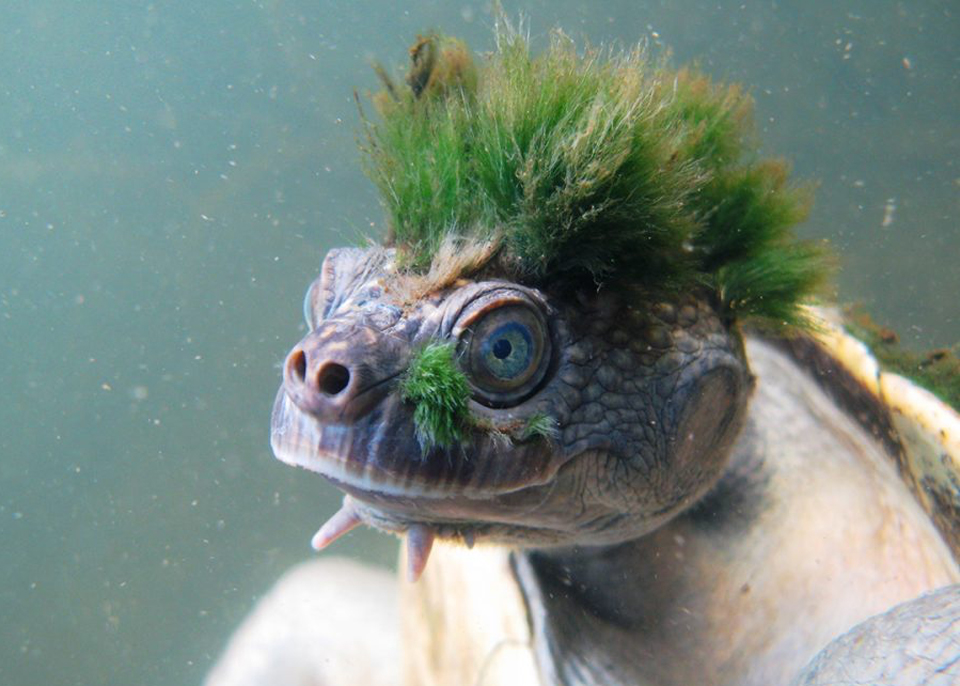
If reptiles were rock stars, Australia’s Mary River turtle would certainly be the poster child. With two spikes under its chin, a tuft of bright green “hair” resembling a Mohawk, and the ability to breathe through its genitals, this reptile might have more showmanship than Gene Simmons.
It’s also officially endangered.
The Zoological Society of London recently released a list of 100 Evolutionarily Distinct and Globally Endangered Reptiles (EDGE Reptiles for short), the first list of its kind since it takes into consideration how unique the species in question are. The Mary River Turtle ranked 29th overall alongside critters like the Madagascar blind snake, the Round Island keel-scaled boa, and the Madagascar big-headed turtle, which ranked at the very top.
Known in the biology community as Elusor macrurus, the Mary River turtle is certainly unique. The animal stretches roughly 40 cm long, has protruding fingers, and boasts specialized glands in its cloaca—an organ used for reproduction and excretion. That last feature allows the Mary River turtle to breathe underwater for up to three days at a time, giving it the “butt-breather” nickname. That penchant for spending so much time underwater is also why these reptiles tend to develop the signature green hairdo; spending all of that time submerged underwater results in algae growth on their heads.
And to think of all the money people spend on fancy hair dyes, huh?
The turtles were actually quite popular back in the 1960s and 70s, according to reptile biologist Rikki Gumbs, who authored a study in PLOS ONE that accompanied the list. He told CNN that at the height of the exotic pet trade the turtles made for a popular pet, putting them in danger of extinction. By the time they were recognized as an actual species in 1994 the problem was well underway.
“The turtle takes a long time to reach sexual maturity, taking up to 25 to 30 years,” he told the publication. “As their vulnerability was discovered late, we lost a whole generation due to the pet trade and now their population has become very small.”
What’s particularly unique about the Mary River turtle is that it broke away from its other related living species roughly 40 millions years ago, meaning it effectively represents its own Tree of Life with no close relatives. To compare, humans split from our closest relatives—chimpanzees and bonobos—less than 10 million years ago.
The building of dams and the collection of eggs for the pet trade have further endangered the turtles, which live in well-oxygenated, flowing sections of streams. As a result the species’ official EDGE score is 5.91, which means it’s flagged as “medium” in terms of the conservation attention it requires to once again thrive.
“Reptiles often receive the short end of the stick in conservation terms, compared with the likes of birds and mammals,” Gumbs told The Guardian. “[But] just as with tigers, rhinos and elephants, it is vital we do our utmost to save these unique and too often overlooked animals… Many EDGE Reptiles are the sole survivors of ancient lineages, whose branches of the Tree of Life stretch back to the age of the dinosaurs. If we lose these species there will be nothing like them left on Earth.”
